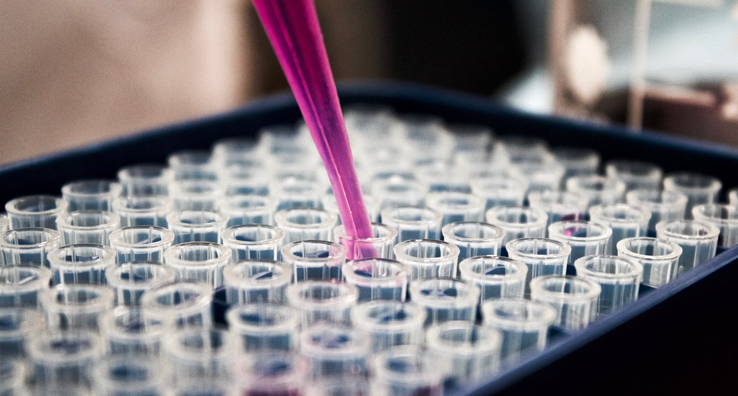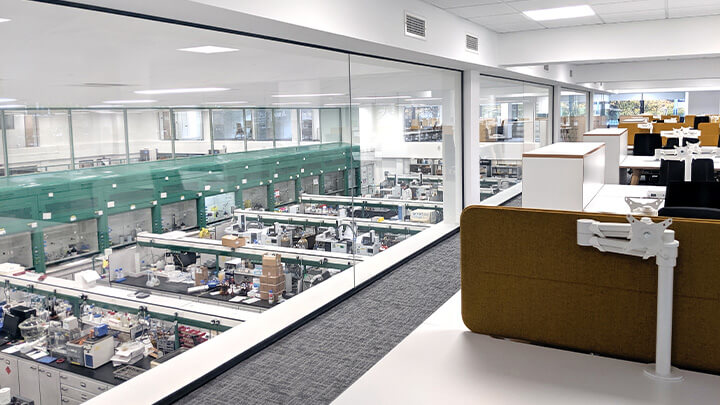Pharmaceutical reference standard materials (RSM) programs which include initial characterization, expiry dating, re-certification, as well as storage and distribution
A reference-standard material is commonly defined as a "highly purified compound that is well characterized", accordingly, the quality and purity of reference standards are crucial to determining scientifically valid results for many pharmaceutical analytical methods.
In cases where primary standards are not available for either active pharmaceutical ingredients or impurities or degradation products, through compendial sources, then a non-compendial (secondary) reference standard must be established through implementation of a RSM qualification program.
Our RSM qualification programs can be applied to reference standards used for assay, impurity or degradation product quantification, metabolite quantification or process impurity identification (organic or inorganic) and quantification. We work closely with clients to establish the requirements of the reference standard material program, with the clients’ needs taken fully into account during the process.
Reference Standard Materials Program Components
Our RSM programs include initial characterization, generation of a certificate of analysis, expiry dating through stability testing with ICH stability storage, repository and distributor, periodic re-qualification, complete characterization of reference standard materials (including sample limited materials).
RSM Initial Characterisation
Our RSM Qualification teams begin programs by determining the essential parameters for qualification including confirmation of the identity and purity of the material. We can apply a broad range of analytical techniques to the initial characterisation of reference standard materials which we deploy strategically, depending on the reference material type (e.g. assay, degradation product, process impurity, resolution or metabolites) and existing knowledge about the material.
Our analytical scientists are adept at performing full characterisation using minimal amounts of the reference standard material where they are in short supply. Re-qualification at subsequent time points may include a reduced suite of these techniques.
Qualification / Requalification Program Design
We work closely with clients during protocol design to establish the requirements of the reference materials qualification program. We can tailor specific study requirements such as the certificate of analyses formats to suit your requirements. Our teams follow a three tiered approach to qualification / re-qualification that is designed to avoid interruptions or delays to your stability or clinical programs or address issues if a primary lot placed the qualification program is observed to degrade.
Our experts offer fully ICH-compliant RSM programs including protocol design, controlled storage and distribution, analytical testing and generation of certificate of analyses with expiration data assignment. Our services can be delivered as a full service or an abbreviated program such as storage only or testing only.
Intertek have conducted reference standards materials programs across a wide range of product and material types including biologic drug substances such as oligonucleotides, recombinant proteins, vaccines, antibody therapeutics, polymeric and oligomeric species. Bringing quality and safety to life, we offer Total Quality Assurance expertise to help you to meet and exceed quality, safety and regulatory standards.
Related Reference Standard Materials Program Services:
- Metals Impurities: Inductively couple plasma spectroscopy with mass spectrometry or optical emission spectroscopy detection (ICP-MS or ICP-OES)
- Non-combustible impurities can be determined by residue on ignition
- Residual solvents typically determined by Gas chromatography approaches (GC-MS or GC-FID)
- Water content by Karl Fischer titration
- Structural Confirmation can be achieved through a variety of approaches including 1H and 13C Nuclear magnetic spectroscopy (NMR), Liquid chromatography – mass spectroscopy (LC-MS), infra-red spectroscopy (FTIR)
- Empirical conformation by C,H,N,S analysis
- Appearance, by visual inspection

Pharmaceutical News & Events
- PRESS RELEASE: Lab expansion to enhance capabilities in inhaled biologics drug development
- PRESS RELEASE: Intertek partners with CrystecPharma to advance formulation science and accelerate development for dry powder inhalers
- NEW! Blog: Optimising Quality in Pharma Supply Chains
- Determination of Particles in Pharmaceuticals - Article
- Discover our Audit Live Tool for direct access to our scheduled audits
- Extractables/Leachables Lab Tour - Request access
- Medical Device Extractables & Leachables Studies
- Glycosylation Analytical Approaches for Antibody Therapeutics
- Rapid Determination of Low/Trace Level Benzene in Pharmaceutical Excipients and Finished Products

Intertek Pharmaceutical Services Manchester
P.O. Box 42
Hexagon Tower
Blackley
Manchester, M9 8ZS
United Kingdom
For location use: M9 8GQ
Intertek Pharmaceutical Services
P.O. Box 470
291 Route 22 East
Salem Industrial Park
Whitehouse, NJ 08888
USA
Sample Size and Pricing Guide (PDF)
Download our Pharmaceutical Testing brochure (PDF)
Download our Intertek Pharmaceutical Services Brochure
Download our Custom Extractables and Leachables Solutions Brochure
Pharmaceutical Services
